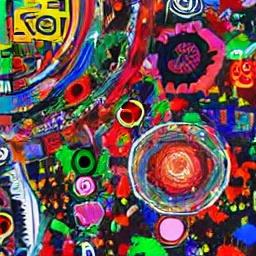Non-fungible tokens (NFTs) have taken the art world by storm, revolutionizing the way digital artists monetize and sell their work. In recent years, NFTs have gained widespread adoption and have become an integral part of the digital art ecosystem. Let’s explore how NFTs were adopted for use and why they have become so popular.
NFTs are unique digital assets that use blockchain technology to verify and authenticate their ownership and provenance. Unlike cryptocurrencies such as Bitcoin, which are fungible and can be exchanged on a one-to-one basis, NFTs are indivisible and cannot be exchanged on a like-for-like basis. This makes them the perfect tool for digital artists to create, sell, and protect their original artwork.

One of the earliest platforms to adopt NFTs for artwork was CryptoPunks. Created in 2017, CryptoPunks are 10,000 unique collectible characters that can be bought, sold, and owned by individuals. Each CryptoPunk is an NFT, representing a unique piece of digital art. The success and popularity of CryptoPunks paved the way for other platforms to enter the NFT space.
In 2018, blockchain-based virtual world Decentraland launched its own marketplace for NFTs. Decentraland allows users to buy, sell, and trade digital land parcels, wearables, and artwork using their native currency, MANA. Artists started creating and selling unique pieces of digital art, leveraging the power of NFTs and blockchain technology to ensure the authenticity and ownership of their work.
The breakthrough moment for NFTs came in early 2021 when a digital collage by artist Beeple titled “Everydays: The First 5000 Days” sold for a staggering $69.3 million at a Christie’s auction. This marked the first time a major auction house had ever accepted and sold a purely digital artwork using NFTs. The sale brought global attention to NFTs and sparked a frenzy of interest and adoption in the art world.
Since then, numerous celebrities, musicians, and artists have jumped on the NFT bandwagon, releasing their own digital creations as NFTs. The Kings of Leon became the first band to release an album as an NFT, while artists like Grimes, Deadmau5, and 3LAU have successfully sold digital art and music as NFTs, earning significant profits in the process. This widespread adoption by established artists has further solidified NFTs as a legitimate and valuable form of art.
The appeal of NFTs for artists lies in their ability to provide transparency, security, and control over their digital creations. NFTs allow artists to retain ownership rights and earn royalties from future sales, even after the initial sale of their artwork. This offers a significant advantage over traditional art markets, where artists often lose control and financial benefits once their work is sold.
The use of NFTs is not limited to digital art alone. We are seeing the expansion of NFTs into other industries such as gaming, virtual real estate, and even sports collectibles. NBA Top Shot, an NFT platform that sells basketball highlight videos, has gained massive popularity, with some moments selling for hundreds of thousands of dollars.
